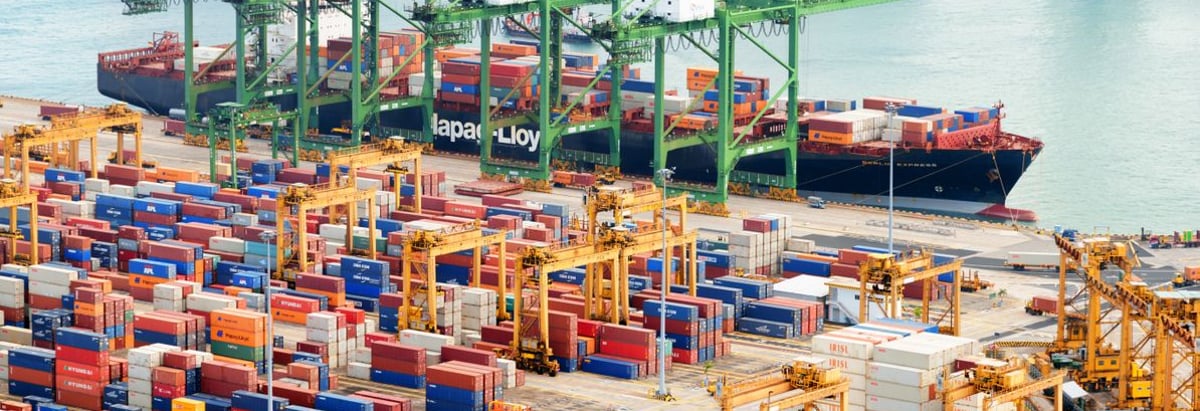Stock Analysis
- Canada
- /
- Infrastructure
- /
- TSX:WTE
Recent 5.4% pullback would hurt Westshore Terminals Investment Corporation (TSE:WTE) insiders

Key Insights
- Westshore Terminals Investment's significant insider ownership suggests inherent interests in company's expansion
- A total of 3 investors have a majority stake in the company with 52% ownership
- Past performance of a company along with ownership data serve to give a strong idea about prospects for a business
A look at the shareholders of Westshore Terminals Investment Corporation (TSE:WTE) can tell us which group is most powerful. And the group that holds the biggest piece of the pie are individual insiders with 48% ownership. In other words, the group stands to gain the most (or lose the most) from their investment into the company.
As market cap fell to CA$1.4b last week, insiders would have faced the highest losses than any other shareholder groups of the company.
In the chart below, we zoom in on the different ownership groups of Westshore Terminals Investment.
Check out our latest analysis for Westshore Terminals Investment
What Does The Institutional Ownership Tell Us About Westshore Terminals Investment?
Many institutions measure their performance against an index that approximates the local market. So they usually pay more attention to companies that are included in major indices.
As you can see, institutional investors have a fair amount of stake in Westshore Terminals Investment. This suggests some credibility amongst professional investors. But we can't rely on that fact alone since institutions make bad investments sometimes, just like everyone does. It is not uncommon to see a big share price drop if two large institutional investors try to sell out of a stock at the same time. So it is worth checking the past earnings trajectory of Westshore Terminals Investment, (below). Of course, keep in mind that there are other factors to consider, too.
Hedge funds don't have many shares in Westshore Terminals Investment. James Pattison is currently the company's largest shareholder with 47% of shares outstanding. For context, the second largest shareholder holds about 2.3% of the shares outstanding, followed by an ownership of 2.2% by the third-largest shareholder.
A more detailed study of the shareholder registry showed us that 3 of the top shareholders have a considerable amount of ownership in the company, via their 52% stake.
While studying institutional ownership for a company can add value to your research, it is also a good practice to research analyst recommendations to get a deeper understand of a stock's expected performance. There is some analyst coverage of the stock, but it could still become more well known, with time.
Insider Ownership Of Westshore Terminals Investment
The definition of company insiders can be subjective and does vary between jurisdictions. Our data reflects individual insiders, capturing board members at the very least. Management ultimately answers to the board. However, it is not uncommon for managers to be executive board members, especially if they are a founder or the CEO.
Insider ownership is positive when it signals leadership are thinking like the true owners of the company. However, high insider ownership can also give immense power to a small group within the company. This can be negative in some circumstances.
Our most recent data indicates that insiders own a reasonable proportion of Westshore Terminals Investment Corporation. Insiders own CA$667m worth of shares in the CA$1.4b company. We would say this shows alignment with shareholders, but it is worth noting that the company is still quite small; some insiders may have founded the business. You can click here to see if those insiders have been buying or selling.
General Public Ownership
With a 44% ownership, the general public, mostly comprising of individual investors, have some degree of sway over Westshore Terminals Investment. While this size of ownership may not be enough to sway a policy decision in their favour, they can still make a collective impact on company policies.
Next Steps:
While it is well worth considering the different groups that own a company, there are other factors that are even more important. Consider risks, for instance. Every company has them, and we've spotted 1 warning sign for Westshore Terminals Investment you should know about.
Ultimately the future is most important. You can access this free report on analyst forecasts for the company.
NB: Figures in this article are calculated using data from the last twelve months, which refer to the 12-month period ending on the last date of the month the financial statement is dated. This may not be consistent with full year annual report figures.
Valuation is complex, but we're here to simplify it.
Discover if Westshore Terminals Investment might be undervalued or overvalued with our detailed analysis, featuring fair value estimates, potential risks, dividends, insider trades, and its financial condition.
Access Free AnalysisHave feedback on this article? Concerned about the content? Get in touch with us directly. Alternatively, email editorial-team (at) simplywallst.com.
This article by Simply Wall St is general in nature. We provide commentary based on historical data and analyst forecasts only using an unbiased methodology and our articles are not intended to be financial advice. It does not constitute a recommendation to buy or sell any stock, and does not take account of your objectives, or your financial situation. We aim to bring you long-term focused analysis driven by fundamental data. Note that our analysis may not factor in the latest price-sensitive company announcements or qualitative material. Simply Wall St has no position in any stocks mentioned.
About TSX:WTE
Westshore Terminals Investment
Operates a coal storage and unloading/loading terminal at Roberts Bank, British Columbia.

